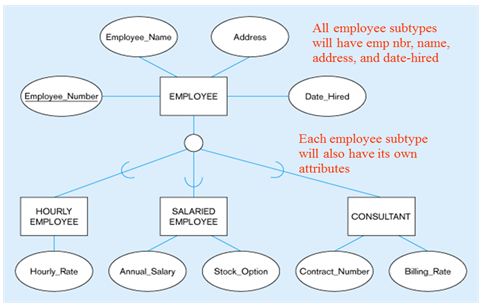Entity Supertypes and Subtypes:
Because most employees possess a wide range of skills and special qualifications, data modelers must find a variety of ways to group employees based on employee characteristics. For instance, a retail company could group employees as salaried and hourly employees, while a university could group employees as faculty, staff, and administrators.
The grouping of employees to create various types of employees provides two important benefits:
• It avoids unnecessary nulls in the employee attributes when some employees have characteristics that are not shared by other employees.
• It enables a particular employee type to participate in relationships that are unique to that employee type.
In modeling terms, an entity supertype is a generic entity type that is related to one or more entity subtypes, where the entity supertype contains the common characteristics, and the entity subtypes contain the unique characteristics of each entity subtype.
There are two criteria that help the designer determine when to use subtypes and supertypes:
• There must be different, identifiable kinds or types of the entity in the user’s environment.
• The different kinds or types of instances should have one or more attributes that are unique to that kind or type of instance.
Consider the following Diagram
You May Also Like:
Difference between partial completeness and total completeness


